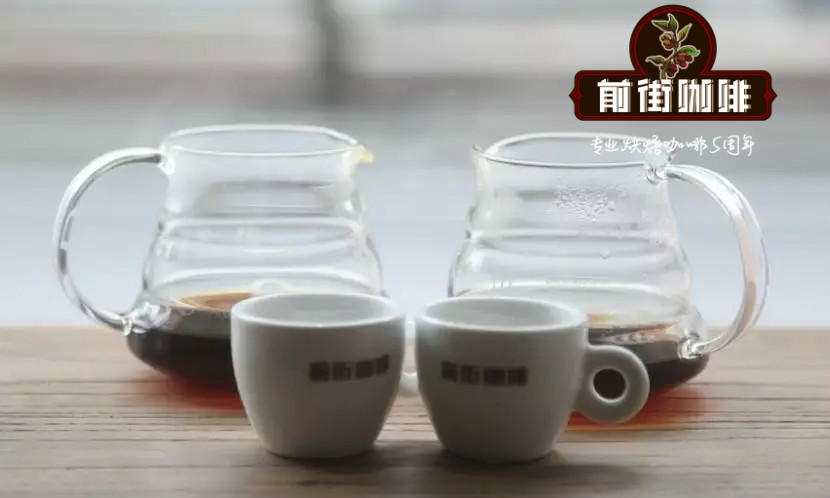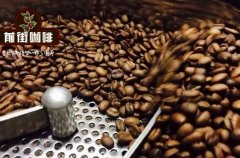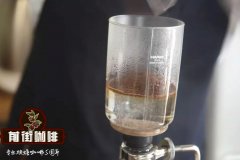What is the Red Cherry Project? About how to brew Yega Chuefei coffee?

Professional coffee knowledge exchange more coffee bean information please follow the coffee workshop (Wechat official account cafe_style)
Yirga cheffe is a small town in Ethiopia, 1700-2100 meters above sea level. It is one of the highest coffee producing areas in the world and is synonymous with Ethiopian boutique coffee. Lake Turkana, Lake Abaya and Lake Chamo bring rich water vapor here.
The Rift Valley, represented by Misty valley, is foggy all the year round, like spring all the year round, with a gentle breeze, cool and humid, and thousands of coffee trees thrive, giving birth to the unique and unpredictable atmosphere of Yejia Xuefei's unique fragrance of flowers and fruits.
The Historical Origin of Yejia Xuefei
At first, Yejassefi's coffee trees were planted by European monks (a bit like Belgian monks growing wheat to brew beer), and later by farmers or cooperatives. Coffee trees are naturally scattered in forests, countryside and backyards. During the harvest season, the Ethiopian Coffee Trading Company will go to town to buy coffee beans collected by farmers and eventually sell them under the brand name "Yega Xuefei".
About the Red Cherry Project OPERATION CHERRY RED
Speaking of the "Red Cherry Project", many friends are no stranger to this name. So what kind of project is the Red Cherry Project? Maybe only a few people can tell.
In order to improve the income of Ethiopian coffee farmers and improve the living standards of the local people, in 2007, Trabocca, a Dutch trader, launched the "OPERATION CHERRY RED PROJECT" Red Cherry Project with farmers from the producing areas. It is purely to encourage farmers to improve the quality of coffee beans. At the beginning of the harvest season in the producing area, Trabocca will specify a harvest plan for the microclimate area to harvest 100% ripe red coffee cherries by hand, with a yield of about 1500 kg-3000 kg.
The Red Cherry Project invested $5000 in 2008 to purchase new sun drying racks. In 2009, another $8000 was invested in the procurement of new sun drying racks and sunshade nets. A $9000 generator was invested in 2010 and a further $10000 was invested in 2011 to improve some local coffee transport roads to make transporting coffee more convenient and efficient. Trabocca offers interest-free loans to buy new coffee cherry meat removers and coffee bean sorters. In order to facilitate suppliers' procurement, a high-quality Addis Ababa coffee cup testing laboratory was built with an investment of US $14000 in 2012.
Trabocca provides financial loan support, new hardware equipment and production processing knowledge and technology to help farmers improve their production, promising to pay generous prices as long as the quality of actual output meets the cup test standards in Ethiopia's Addis Ababa and Amsterdama Cup in the Netherlands. The passing standard set by Trabocca is 88 points.
The coffee beans of the Red Cherry Project are immediately packed in plastic inner bags (GrainPro bags or vacuum box) immediately after the processing of the origin is completed, then shipped to Djibouti for shipping. Strive for perfect quality through immediate monitoring, safe transportation and timely and appropriate handling. As a result of this red cherry program, roasters can buy high-quality coffee beans, improve the quality of Ethiopian coffee and have better prices. Trabocca can also return profits to farmers, and continue to improve and improve the quality.
Operation Red Cherry is also a reinforcing method, which makes the farm pay more attention to the process of selecting beans. The prices of these coffees are also relatively high. Red Cherry Action has water washing, sun-drying beans, half-washing, half-sun, experimental coffee and so on. The main producing areas are Yegashev, Sidamo, Penga Forest, Lekanti, Ken Bata, Iruba, Hara, Lim, and joined Coroja Golocha in 2011 (near Hara). These are unique flavors and can fully show the flavor of Ethiopian beans. Trabocca will choose from the coffee after receiving it. Farms that have passed the cup test quality test in Ethiopia and the Netherlands will pay a high bonus. The cup test pass score must be more than 88 points in order to become a good coffee for the Red Cherry Project. Trabocca, the promoter of the Red Cherry project, invested all the profits earned in the past few years in the cooperative farm. Trabocca stressed that this is an unprofitable plan, so the company only uses four people, including the boss and secretary, to carry out the Red Cherry project, and other administrative related matters are supported by the parent company to reduce administrative expenses, and all the profits are returned to the cooperative farm.
END
Important Notice :
前街咖啡 FrontStreet Coffee has moved to new addredd:
FrontStreet Coffee Address: 315,Donghua East Road,GuangZhou
Tel:020 38364473
- Prev

Mocha coffee is what Mocha coffee classification introduction Mocha coffee should do?
Professional coffee knowledge exchange More coffee bean information Please pay attention to coffee workshop (Weixin Official Accounts cafe_style) Mocha coffee and latte coffee are the most fancy coffee we see in cafes. Many people think mocha coffee and latte coffee are similar. Today we will talk about the difference between mocha coffee and latte coffee. Although both types of coffee belong to Italian coffee, both are used.
- Next

What are the characteristics of West Java coffee? How should West Java coffee be roasted? How to drink West Java Coffee
Professional coffee knowledge exchange more coffee bean information please pay attention to the coffee workshop (Wechat official account cafe_style) West Java from Indonesia's West Java Province, located in the western part of Java, facing the Java Sea to the north, the southern Indian Ocean, including offshore islands, covering an area of 46300 square kilometers, Java's climate type is tropical rain forest climate, hot and humid all the year round. The plains along the northern coast are warm
Related
- Detailed explanation of Jadeite planting Land in Panamanian Jadeite Manor introduction to the grading system of Jadeite competitive bidding, Red bid, Green bid and Rose Summer
- Story of Coffee planting in Brenka region of Costa Rica Stonehenge Manor anaerobic heavy honey treatment of flavor mouth
- What's on the barrel of Blue Mountain Coffee beans?
- Can American coffee also pull flowers? How to use hot American style to pull out a good-looking pattern?
- Can you make a cold extract with coffee beans? What is the right proportion for cold-extracted coffee formula?
- Indonesian PWN Gold Mandrine Coffee Origin Features Flavor How to Chong? Mandolin coffee is American.
- A brief introduction to the flavor characteristics of Brazilian yellow bourbon coffee beans
- What is the effect of different water quality on the flavor of cold-extracted coffee? What kind of water is best for brewing coffee?
- Why do you think of Rose Summer whenever you mention Panamanian coffee?
- Introduction to the characteristics of authentic blue mountain coffee bean producing areas? What is the CIB Coffee Authority in Jamaica?

